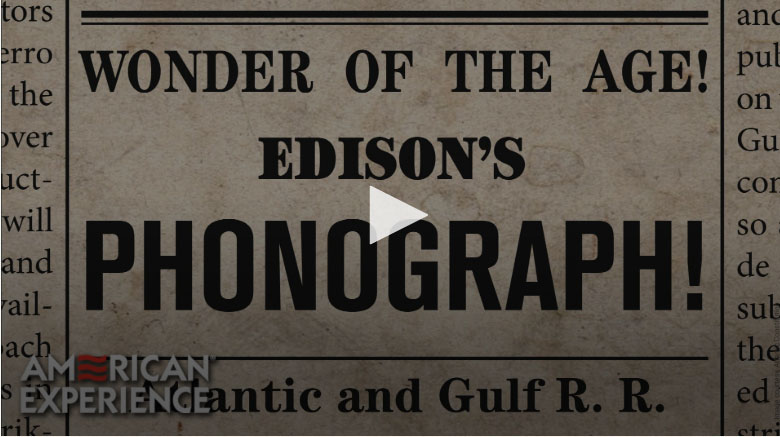The
Phonograph and Its Future
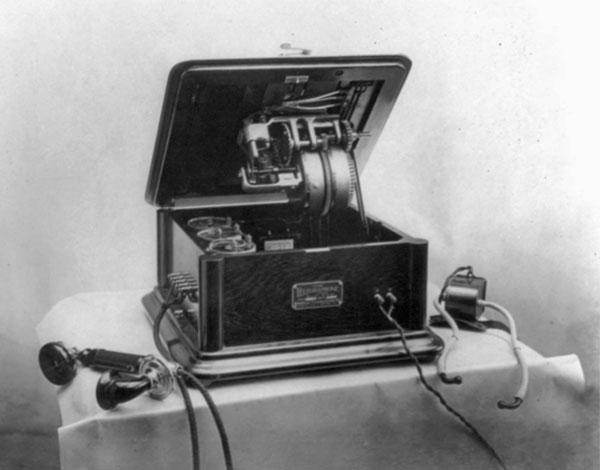
Probability:
Perfect the Telephone and revolutionize present systems of telegraphy.
Perfect the telephone and revolutionize
present systems of telegraphy. - Connecting up with the
telephone as a permanent record of what was said....the speaker
will be able to simultaneously transmit and record his message.
The original phonograph
had a close relationship with the telegraph and the telephone as Edison
was working on both when he realized how sound might be captured and
replayed. (See An American Experience video Edison:
From the Telephone and Telegraph Comes the Phonograph for an excellent
overview of how one invention led to another when Thomas Edison and
his Menlo Park laboratory team refined Alexander Graham Bellís telephone
and, along the way, invented the phonograph).
Therefore, Edison identifying "the
connecting up of the phonograph with the telephone" as one
of the future probabilities for the phonograph shouldn't be surprising.
Connecting the telephone to a recording
device, however, would not commercially be done by Edison, but by
Valemar Poulsen who in 1898 invented the Telegraphone which was
an electromagnetic phonograph that recorded sound by the alternating
magnetization of a wire.
Poulsen had trouble getting support
for his device in Europe but did receive financial backing in the
United States in 1903 and promoted its ability for 'automatically
recording every message which comes or goes through your 'phone,
to be reproduced whenever and as often as you may choose, in the
very tones and inflections of each speaker" as seen in this
1906 ad in The Talking Machine World.
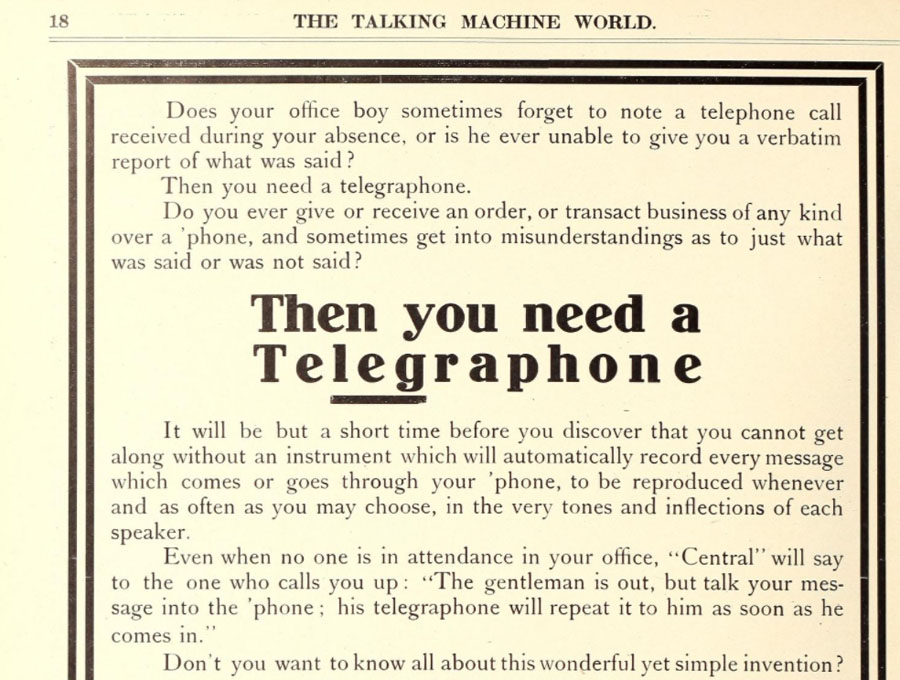
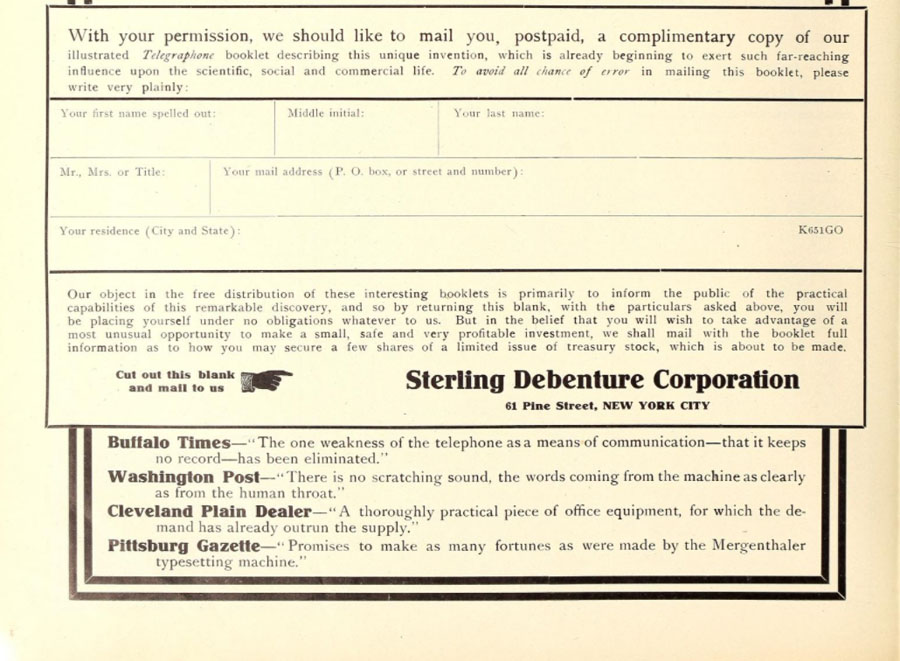
The Talking Machine
World, December 16, 1906
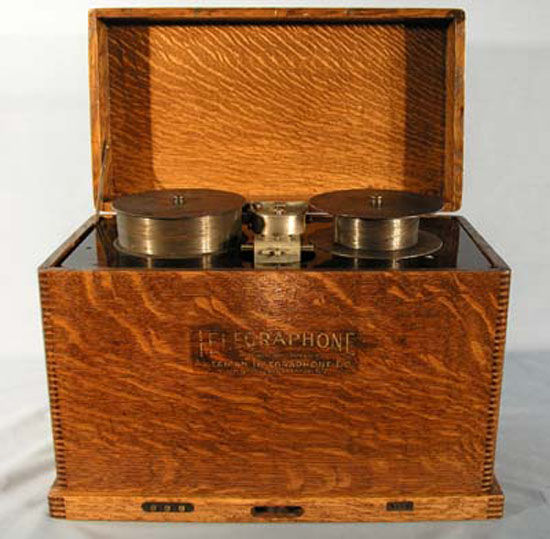
1911 Poulsen Model C
Telegraphone, Courtesy of Pavek
Museum, St. Louis Park, MN
Poulsen's Telegraphone
as a "telephone answering machine" has its place in history
but it wasn't 'automatic' and it wasn't a commercial success. According
to Wikipedia's article on the "Answering machine, the
invention of the answering machine was in the 1930's with the date
and its inventor in dispute. Many say "the
answering machine was invented by William Muller in 1935, but it may
already have been created in 1931 by William Schergens whose device
used phonographic cylinders. Ludwig Blattner promoted a telephone
answering machine in 1929 based on his Blattnerphone magnetic recording
technology. In 1935 inventor Benjamin Thornton developed a machine
to record voice messages from the caller. The device reportedly also
was able to keep track of the time the recordings were made. Although
many sources maintain that he invented it in 1935, Thornton had actually
filed a patent in 1930 (Number 1831331) for this machine, which utilized
a phonographic record as the recording medium."
See Wikipedia's "History"
section of "Answering
Machine" for more details about this part of the answering
machine's history.
As far as Edison's prediction
list goes, a telephone 'answering machine' was a reality in the 1930's
and its place in popular culture would grow until 'voice mail' replaced
the need for a separate 'device' connected to your phone to record
and playback messages.
Telephone
Answering Machines in Popular Culture
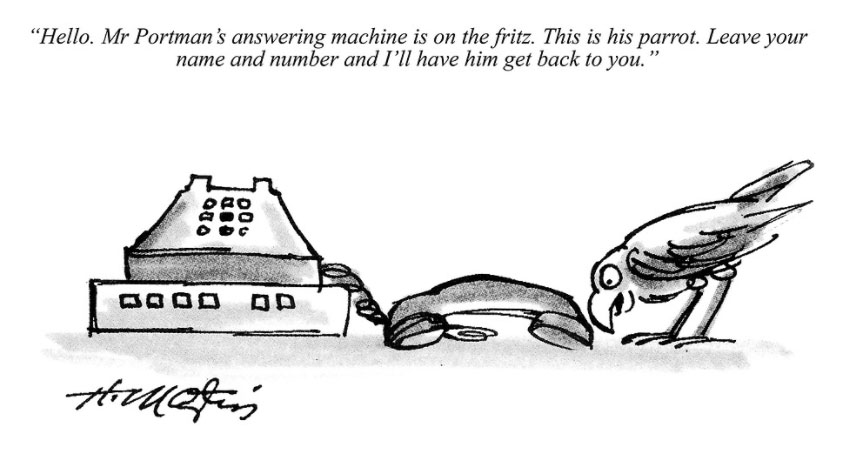
Henry Martin, Punch
magazine, September 1984

Answering Machine
Messages December 13, 2003 Dave Blazek

Coffee mug from London
Times cartoon by Rick London and Rich Diesslin, 2001
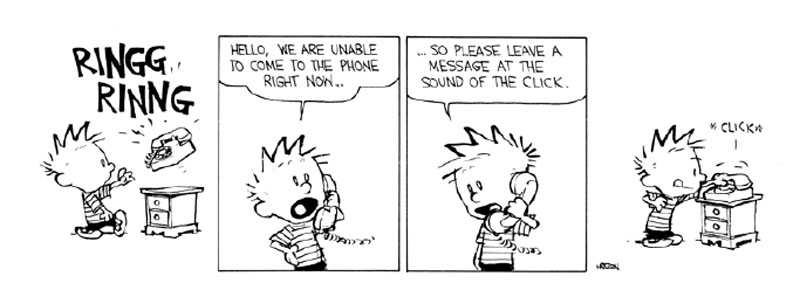
Calvin and Hobbes, Courtesy
Bill Watterson, 1992

Courtesy Scott Adams,
October 29, 2001
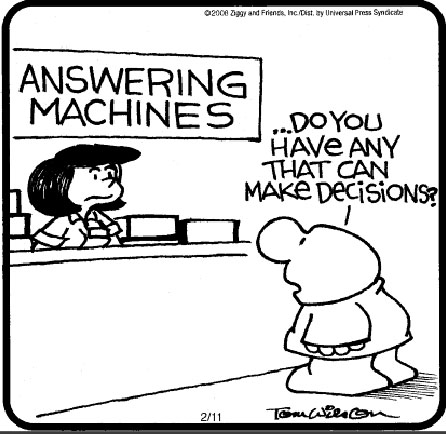
Courtesy Tom Wilson,
2008

Girls
with Slingshots, Courtesy Danielle Corsetto
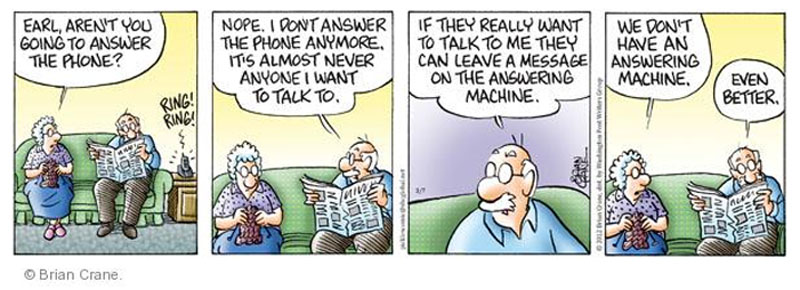
Brian
Crane, March 7, 2012
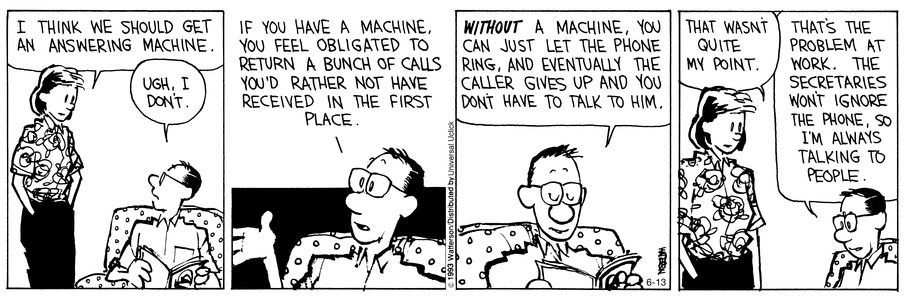
Calvin and Hobbes, Courtesy
Bill Watterson, 1993
The
Phonograph and two early recorded messages for calls that could not
be completed at this time
The following improvement for the
telephone system used the phonograph prior to the introduction of
"answering machines."
In 1893 The Examiner reported
how San Francisco telephone operators were going to save time and
their voices by using the phonograph to provide standard messages
to the caller when a telephone subscriber was not available. A new
switching system was being tested and the article reported it to
be so successful that it was expected to soon be widely used in
other telephone markets.
Here's how the Manager explained the
problem and the phonograph's role in providing a solution.

Testing the solution
used two phonographs with each given a stock reply which an operator
would otherwise have to say to the caller:
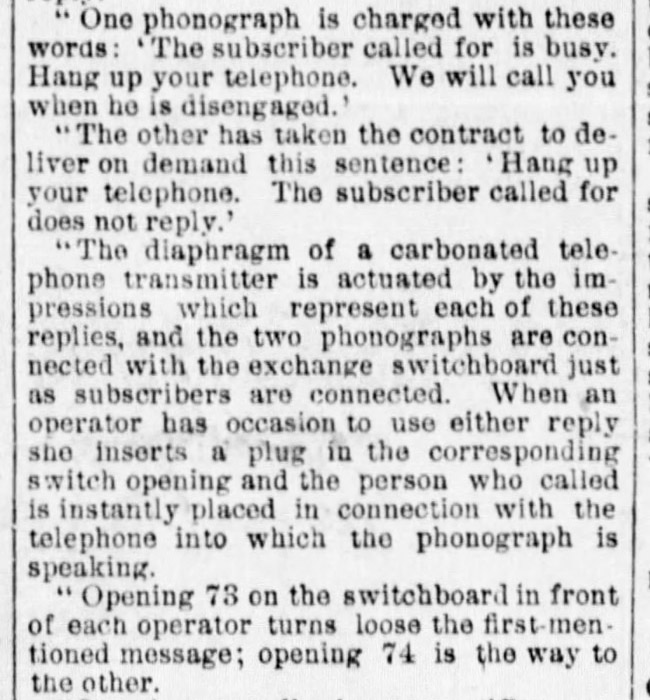
To read the entire article
which include a number of humorous interactions with telephone subscribers
on the other end of one of the phonograph messages, read "GIRLS
MUST TALK LESS" The Examiner, San Francisco, November
12, 1893.
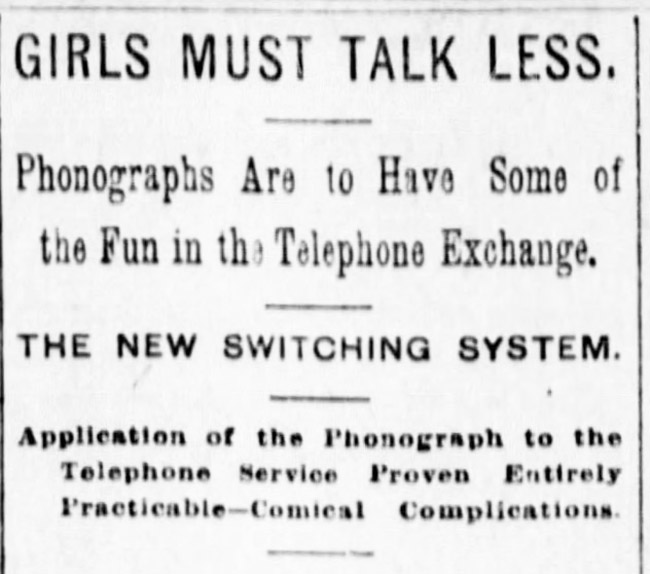
The Examiner,
San Francisco, November 12, 1893.

|

